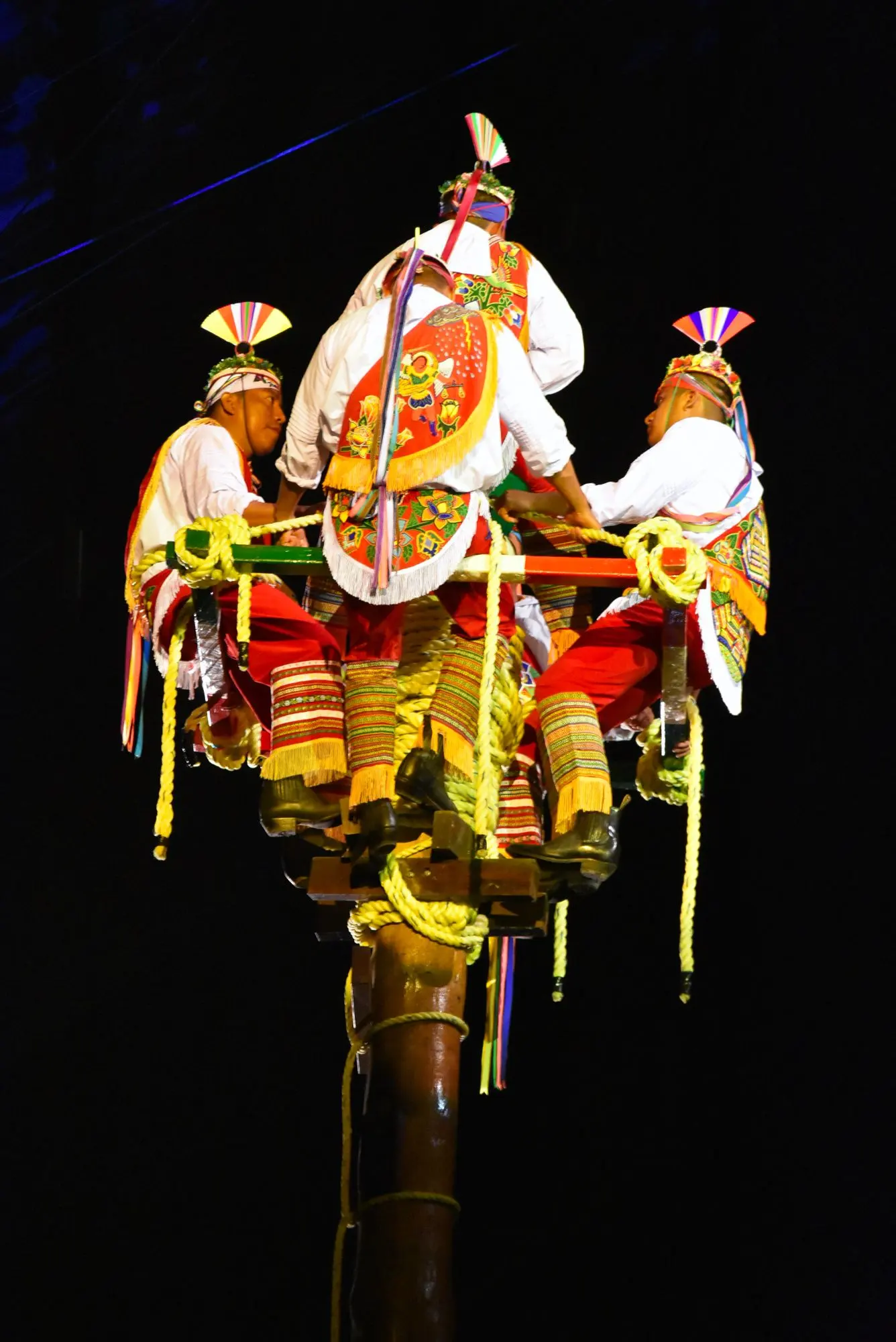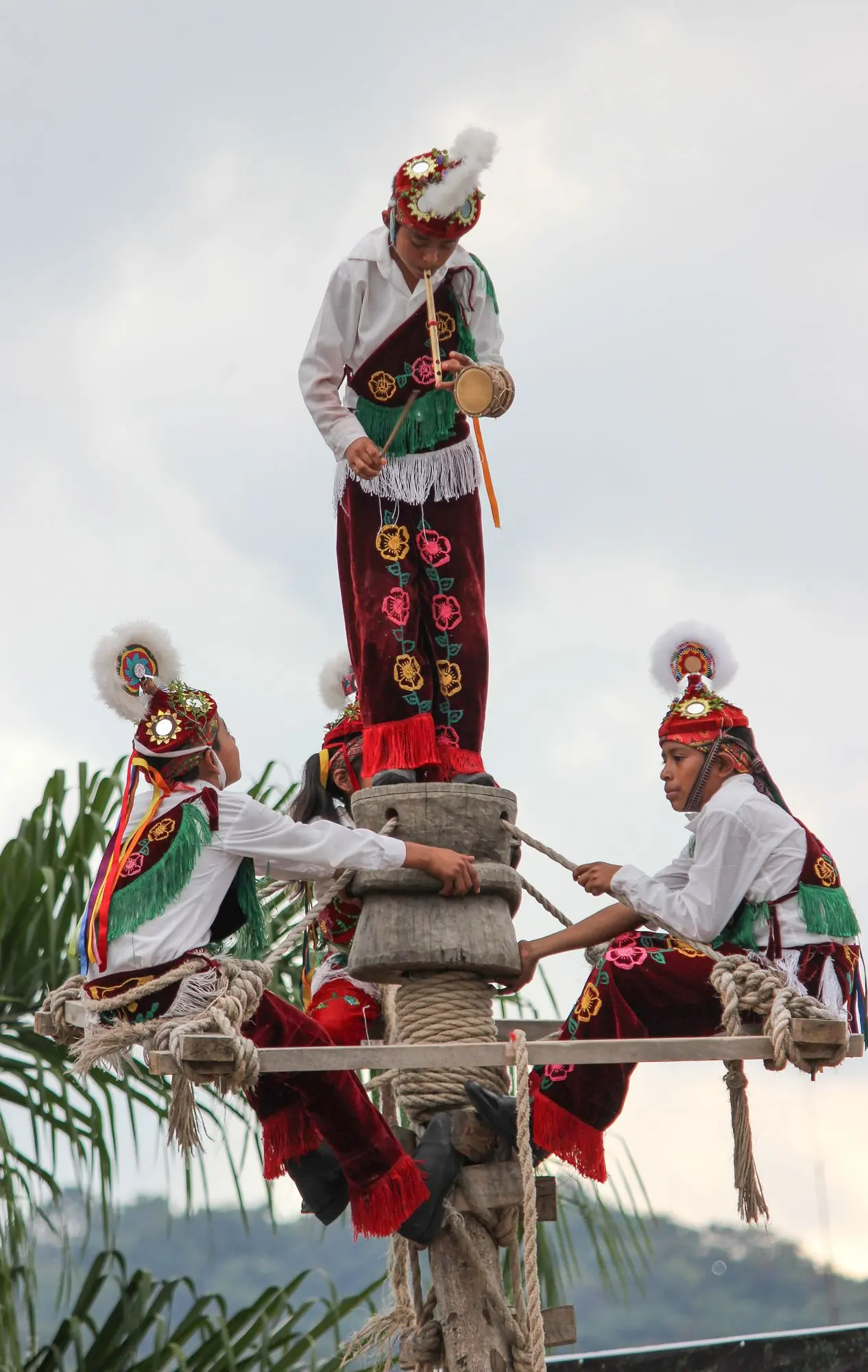The Dance of the Flyers is quite different from bungee jumping, but there is certainly a resemblance. The ancient ritual originated in pre-Hispanic times, though its exact origin has been lost to time. Today, the custom is still practiced in certain areas of Mexico and Central America and is largely associated with the Totonac people of Papantla Veracruz.
 Dance of the Flyers performed at the 2014 Richmond Folk Festival. Author: Mobilus in Mobili License: CC BY 2.0
Dance of the Flyers performed at the 2014 Richmond Folk Festival. Author: Mobilus in Mobili License: CC BY 2.0 A Totonac myth tells of a drought brought upon the Totonac people by their angry gods. In order to appease these gods, a ceremony was created in their honor. For the ceremony, a large tree is cut down and made into a pole and placed in the village. This process is called the tsakae kiki. The flyers, also known as voladors, make their own costumes, which consist of embroidered red pants and a white shirt. The four flyers represent the four elements: Earth, air, wind, and fire.
According to tradition, the village priest is the first to climb to the top of the pole where he then plays a flute and drum. The four flyers follow, tying ropes to their ankles once they reach the top. They then jump backwards off the pole, spinning around it until they reach the ground. The flying men circle the pole 13 times each. This makes a total of 52 rotations, representing the number of years in the Aztec century.
 Traditional clothing of the Voladores de Palo Papantla. Author: Armando Olivo Martin del Campo License: CC BY 4.0
Traditional clothing of the Voladores de Palo Papantla. Author: Armando Olivo Martin del Campo License: CC BY 4.0 Many believe the revered position of volador should be exclusive to men, but there have been some female flyers. Jesus Arroyo Ceron, one of the first men to train female voladors, taught four of his daughters how to perform the ritual. When he passed away after falling from a pole at the age of 70, several of his family members claimed that divine retribution caused his death. Some places have forbidden women to take part in the custom. At the time this article was written, there were about 20 known female voladors.
 Traditional clothing of the Voladores de Palo Papantla. Author: Samantha Barajas License: CC BY 4.0
Traditional clothing of the Voladores de Palo Papantla. Author: Samantha Barajas License: CC BY 4.0 In order to preserve the ancient custom, the Dance of the Flyers has been named an Intangible Cultural Heritage by the United Nations Educational, Scientific and Cultural Organization, also known as UNESCO. The religious ritual is rarely practiced in its true form today, but has been preserved by several peoples in Mexico and parts of Central America.
Video showing the Dance of the Flyers from the perspective of a participant: